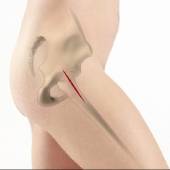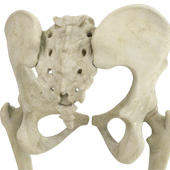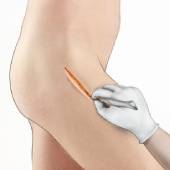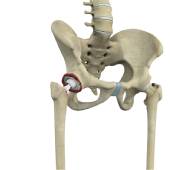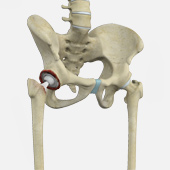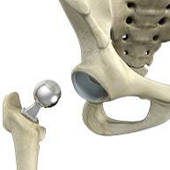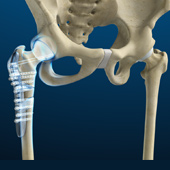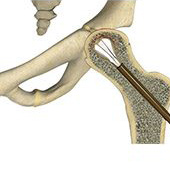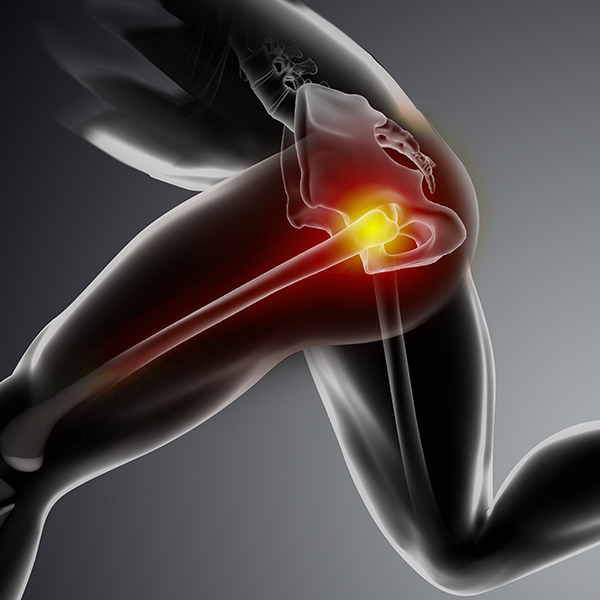Hip Procedures
- Anatomy
- Conditions
- Procedures
Total Hip Replacement
Total hip replacement is a surgical procedure in which the damaged cartilage and bone is removed from the hip joint and replaced with artificial components. The hip joint is one of the body's largest weight-bearing joints, located between the thighbone (femur) and the pelvis (acetabulum).
Anterior Hip Replacement
Anterior hip replacement surgery is performed under general anesthesia or regional anesthesia. You will lie down on your back, on a special operating table that enables your surgeon to perform the surgery from the front of the hip. Your surgeon may use fluoroscopic imaging during the surgery to ensure the accuracy of component positioning and to minimize leg length inequality.
Posterior Hip Replacement
Posterior hip replacement is a minimally invasive hip surgery performed to replace the hip joint. It is also referred to as muscle sparing surgery because no muscles are cut to access the hip joint, enabling a quicker return to normal activity.
Minimally Invasive Total Hip Replacement
Traditionally, total hip replacement will be performed through a 10–12-inch-long incision made on the side of your hip. A minimally invasive approach has been developed in recent years where surgery is performed through one or two smaller incisions rather than the single long incision as in the traditional approach. Advantages of the newer approach are lesser muscle dissection, minimal pain, quicker recovery and faster rehabilitation.
Revision Hip Replacement
Revision hip replacement is a complex surgical procedure in which all or part of a previously implanted hip joint is replaced with a new artificial hip joint. Total hip replacement surgery is an option to relieve severe arthritis pain that limits your daily activities.
Correction of a Failed Hip Replacement
Reoperation of a total hip replacement to resolve a painful hip condition arising out of a damaged or worn out prosthesis (artificial hip joint) is known as correction of a failed hip replacement. During this corrective surgery, a partial or complete exchange of the prostheses that were implanted during the original surgery is done.
Hip Hemiarthroplasty
Hip hemiarthroplasty is a surgical technique employed to treat hip fractures. In this procedure, only one half (ball section) of the hip joint is substituted by a metal prosthesis.
The hip joint is one of the body's largest weight-bearing joints and is the point where the thigh bone (femur) and the pelvis (acetabulum) unite. It is a ball and socket joint in which the head of the femur is the ball and the pelvic acetabulum forms the socket. The joint surface is covered by smooth articular cartilage that cushions and enables smooth movements of the joint.
Hip Fracture ORIF
A hip fracture is a break that occurs near the hip in the upper part of the femur or thighbone. The thighbone has two bony processes on the upper part - the greater and lesser trochanters. The lesser trochanter projects from the base of the femoral neck on the back of the thighbone. Hip fractures can occur either due to a break in the femoral neck, in the area between the greater and lesser trochanter or below the lesser trochanter.
Core Decompression for Avascular Necrosis of the Hip
The hip joint is a ball and socket joint, where the head of the thighbone (femur) articulates with the cavity (acetabulum) of the pelvic bone.
Sickle cell disease, a group of disorders that affect the hemoglobin or oxygen-carrying component of blood, causes avascular necrosis or the death of bone tissue in the hip due to lack of blood supply.
Physical Therapy for Hip
Physical therapy is an exercise program that helps you to improve movement, relieve pain, encourage blood flow for faster healing, and restore your physical function and fitness level. The main aim of physical therapy is to make your daily activities, such as walking, getting in and out of bed and climbing stairs, easier. It can be prescribed as an individual treatment program or combined with other treatments. Physical therapy is usually ordered to help you recover after certain surgeries, injuries and long-term health problems such as arthritis.


